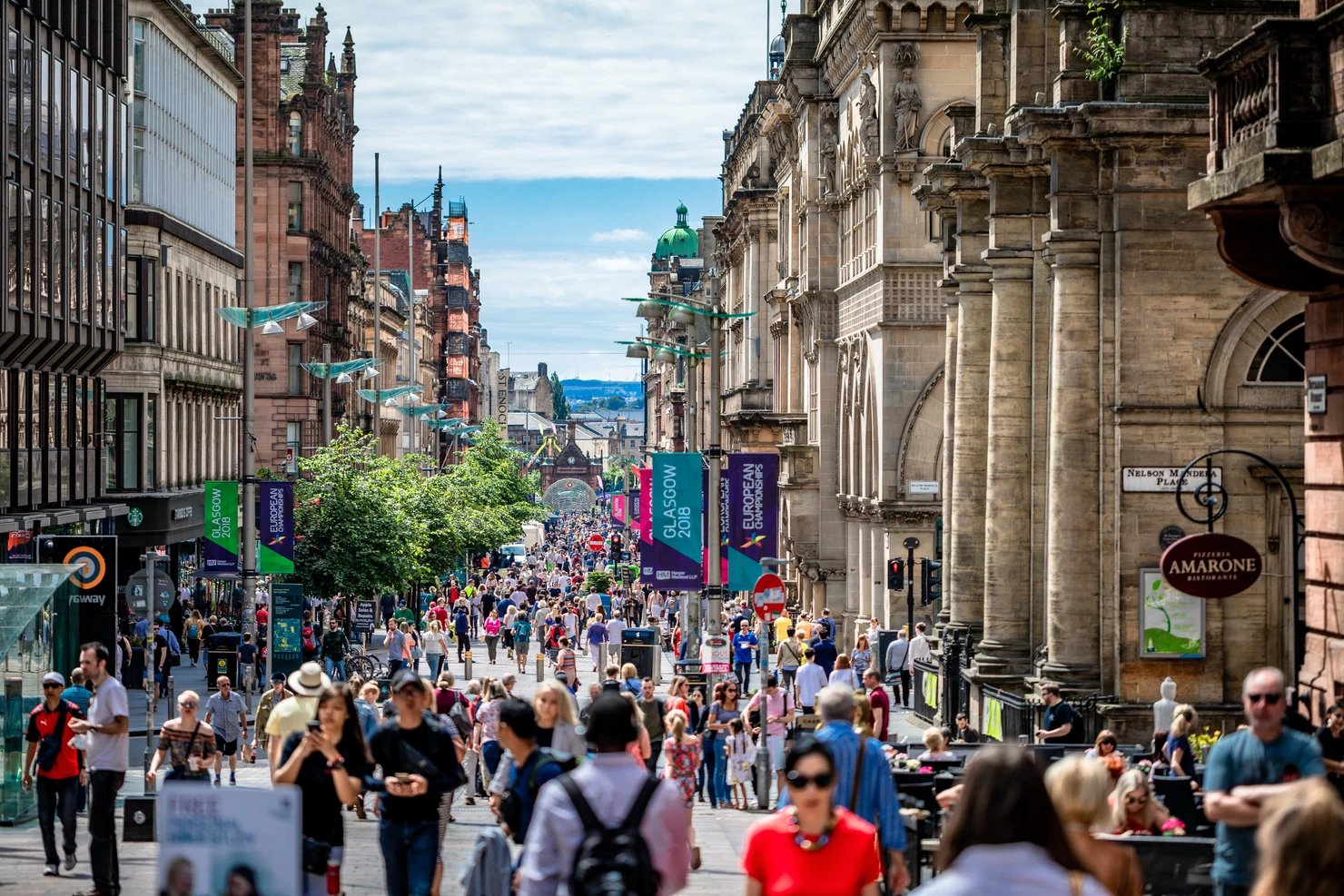Joined Up Thinking.
The Role of Audience Engagement Platforms in the Future of the High Street
I have a confession to make…I’m in the technology industry, yet I’m slightly ambivalent about the pace, influence, and invasive nature of technology in our daily lives. I also know I am not alone in this. In fact, it would be less than professional of me not to take stock of the potential pitfalls of blanketing technology as a solution for every human need or desire.
Technology is without doubt, a double-edged sword. It has great power, and as Spiderman says, with great power comes great responsibility.
It is no secret that the series of lockdowns instituted to safeguard against the spread of COVID-19, have had a disastrous impact on local and national economies. One side of the sword saw the rapid uptake of technology to support ongoing business, which has prompted a shift to remote working and the adoption of digital strategies such as videoconferencing, cloud-hosted collaborative working tools and so on.
The flip side, the adoption of online shopping and delivery methods has seen a shrinking of Britain’s traditional high street retail sector, and a shift in the type of goods that are being bought, given hybrid working adoption.
But it’s not all doom and gloom. Far from it. This is the ideal opportunity for high streets to reboot themselves. As TechUK in their discussion paper on ‘Technology and the Future of the High Street’ notes, there is a dire need to help increase footfall, attract customers, and improve business prospects in the long term. They also posit that the high street can become work hubs for remote workers and centres for arts and entertainment.
To make this a reality, not only is improved connectivity a must, but it is paramount that technology is implemented to increase audience engagement and improve marketing efforts to attract new viewers, visitors etc, and then maintain a conversation/connection with them.
This can be done by individual businesses of course but, understanding audience flow and what makes people tick in real time to help revitalise city centres or the town square, could just as well fall into the remit of the local authority too.
Joined up thinking is required between all stakeholders to ensure a cohesive plan is developed and delivered, for not only the survival of the high street under threat from out-of-town mega malls (just as the rest of the world are switching to online deliveries and the future of the mall is itself in question), but the economy for the greater good too.
The happiness factor in engaged communities
Lockdowns have without question, had their dark and downsides, but there is an upside too. Research has shown how people working from home are much happier – therefore more productive in every aspect of their lives.
This happiness factor can be extended to towns, cities as well, as digital transformation is the catalyst that can unite communities. So important is this aspect, that the Local Government Association website has a toolkit for how to revitalise a town centre, that is centred on digital as a means for improving communications, relationships, and local economies.
One of the key recommendations in the TechUK discussion document is that high streets need support to “compete with international brands by transforming their customer experience using cutting edge technologies like Augmented Reality and Virtual Reality.”
One such technology that can assist in the process of understanding human needs, and behavioural patterns to help revitalise high streets, city centres and transform them into buzzing, happening places, is an audience engagement platform (AEP).
AEPs are immersive mobile applications and a technology innovation that are changing how we experience the world around us from entertainment and sports to visitor attractions, hospitality, and retail.
Audience engagement is transformed through innovation in immersive media and mobile-web technology to positively influence behaviour and create loyal, engaged, and educated audiences – whether this be for museums, theatres, art galleries, heritage and culture sites, sports stadia, zoos, and aquariums, or even in this case, business improvement districts.
Such is the advancement of technology that drives these Software as a Service (SaaS) platforms and mobile-web experiences, they can now deepen engagement both on and off-site whilst delivering actionable insights.
Built for the experience economy, AEPs can, amongst many other ways:
- Create destination engagement
- Promote culture and heritage sites and deepen the learning experience
- Create, track, and deliver insights on audience experiences for events
- Can be tailored to seasonal activities
- Promote special offers and incentives – whether it’s a retail offering, a museum trip or something the town council is doing
- Promote live events, shows and what’s on
- Can be used for new developments/regeneration
- Deliver insights on dwell time and content engagement to improve future experiences
- Deliver push notifications as alerts or notice boards
- Integrate mobility and transport connectivity
- Be used for image and object recognition through built-in beacon trigger technology
- Help keep track of event plans
- Wayfinding – so visitors, or even residents, never need to get lost.
At the heart of any future success for the smart towns and cities of tomorrow, is understanding what makes people of all walks of life tick. AEPs can realise this seamlessly and in real time, as they capture and process inordinate amounts of data, which can be segmented and can then deliver personalised communication.
Combine this with an environment in which all stakeholders are engaged with one another, and there is a free flow of ideas and interests, Audience Engagement tools become essential tools for delivering joined up thinking in the experience economy - the future of the high street realised today.
For more on audience engagement platforms, get in touch, or check out our case studies and other articles.
Photo by Artur Kraft on Unsplash

/Blog/Authors/Bryan%20circle.png?width=90&name=Bryan%20circle.png)



/Blog/Authors/PHOTO-2022-05-06-14-05-59.jpg?width=90&name=PHOTO-2022-05-06-14-05-59.jpg)
